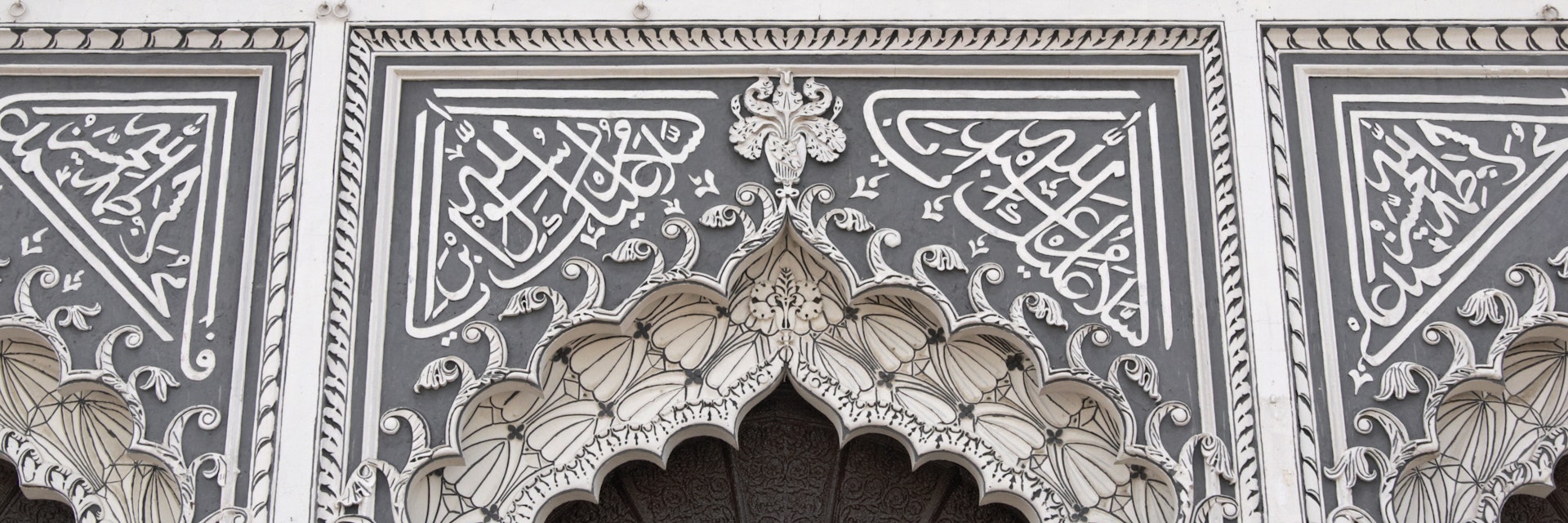This elaborate black-and-white tomb was constructed in 1832 by the third king of Oudh, Mohammed Ali Shah (who is buried here, alongside his mother). Adorned with calligraphy, it has a serene and intimate atmosphere. Mohammed’s silver throne and red crown can be seen here, as well as countless chintzy chandeliers and some brightly decorated tazia.
In the garden is a water tank and two replicas of the Taj Mahal that are the tombs of Mohammed Ali Shah’s daughter and her husband. A traditional hammam is off to one side.
Outside the complex, the decaying salmon-coloured watchtower on the other side of the road is known as Satkhanda. It has only four storeys because construction was abandoned in 1840 when Mohammed Ali Shah died.
The nearby 67m red-brick clock tower, the tallest in India, was built in the 1880s. Next to it is the Hussainabad Picture Gallery, a run-down red-brick baradari (pavilion) built in 1842 that was once a royal summer house. It overlooks an octagonal stepped talab (water tank) and houses portraits of Oudh's former nawabs.
Just around the corner is the huge Jama Masjid. completed in 1845. Non-Muslims can't enter, but it's worth seeing the impressive three-domed facade.



